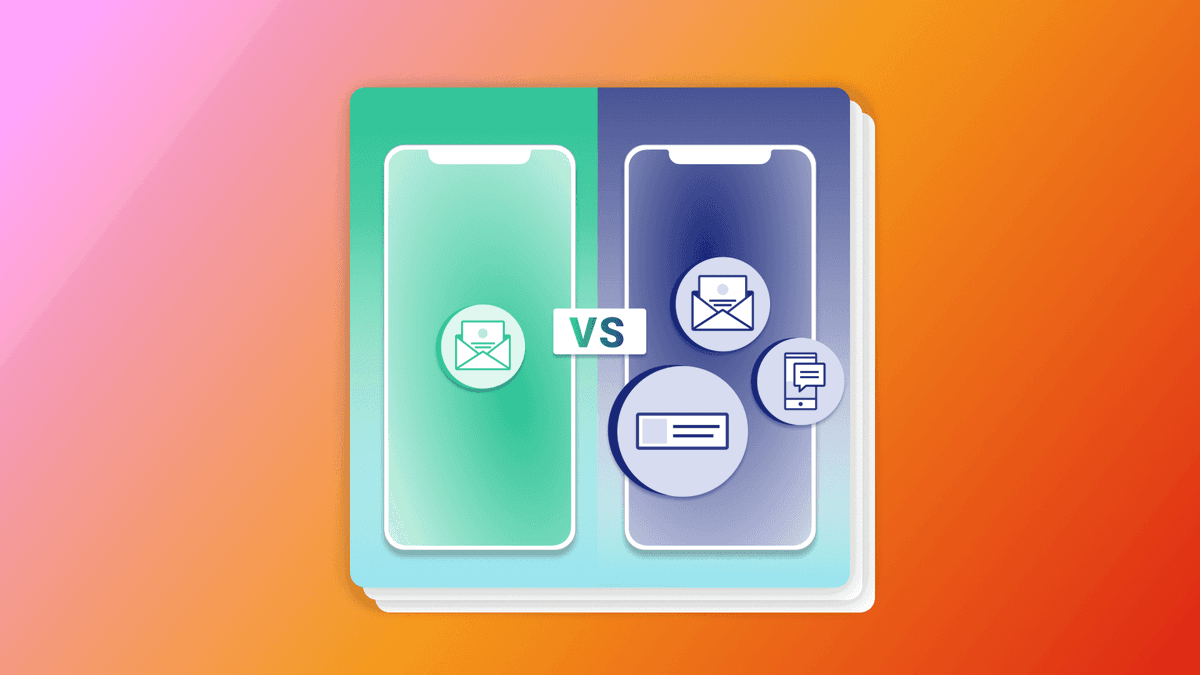Single-Channel vs. Cross-Channel Customer Engagement: A Closer Look
Published on April 20, 2021/Last edited on April 20, 2021/3 min read


Mary Kearl
WriterMeeting your customers where they are across a variety of channels is a winning strategy—one that helps brands outperform competitors who stick to using only a single channel for outreach, such as only messaging customers via email marketing. Compared with single-channel customer engagement, customer engagement across multiple channels has been found to lead to increases in purchases, lifetime value (LTV), customer retention, and other critical business outcomes.
Single-Channel vs. Cross-Channel Customer Engagement, Explained
Single-channel customer engagement: As the name suggests, with single-channel customer engagement, brands message and interact with their customers via only a single unique channel, such as email or SMS, not both.
Cross-channel customer engagement: As the name suggests, brands message and interact with their customers across multiple channels, such as email and SMS, as well as a variety of other popular channels.
Single-Channel Engagement is Powerful—Just Not as Powerful as Cross-Channel
Never underestimate the power of sending the right text campaign, push notification, or email. Sending notifications via a single channel can increase a customer's likelihood to purchase, purchase rates, and overall retention, according to our comprehensive analysis of Braze data aggregated from over five billion global users as part of our first annual Global Customer Engagement Review.

Best-in-class Brands Take Things a Step Further by Sending Both In-Product and Out-of-Product Messaging
Instead of picking one channel to connect with customers to keep them informed, leading marketers maximize relationships with users by continuing the conversation across both in-product messaging channels and out-of-product messaging channels, AKA the two main types of messaging categories.

In-product messages, as the name suggests, are campaigns sent within your website or apps. This is also referred to as "pull messaging," as it "pulls" engaged users in further. Out-of-product messages are also known as "push messaging" as this type of outreach is often designed to "push" users back to your owned marketing channels, such as your website or app.
We've found that brands with messaging that encompasses both of these types of messages are more likely to see gains in buyers, purchases, LTV, and retention.

The Benefits of Customer Engagement Across Channels
Customer engagement that embraces coordinated campaigns that leverage multiple channels not only benefit top-of-the-funnel metrics, it can also impact bottom-of-the-funnel conversions, resulting in uplifts in purchases (by 73%), LTV (by 4.2X), and retention (by 58%).

When Braze client and leading African streaming service Showmax expanded its cross-channel approach to include email, push, and in-app messages and personalized its campaigns based on key customer lifecycle moments, content preferences, and other personal factors, the company was able to increase its ROI by 37% and boost its subscribers by 204%. Read the full case study and see how Showmax and other leading brands are using cross-channel messaging to drive engagement KPIs.
For a closer look at the impacts of cross-channel engagement on global brands across industries, check out our 2021 Global Customer Engagement Review. As part of this report, you'll see first-hand how adopting cross-channel engagement strategies have helped companies within the health and wellness, financial services, media and entertainment, QSR and delivery, and retail and ecommerce verticals scale growth across sessions, LTV, retention, and purchases.
Related Tags
Be Absolutely Engaging.™
Sign up for regular updates from Braze.
Related Content
View the Blog
How behavioral marketing turns data into personalized experiences

Team Braze

Enterprise generative AI: Transforming data, decisions, and customer experiences

Team Braze

Omnichannel personalization: Delivering consistent, connected customer experiences
